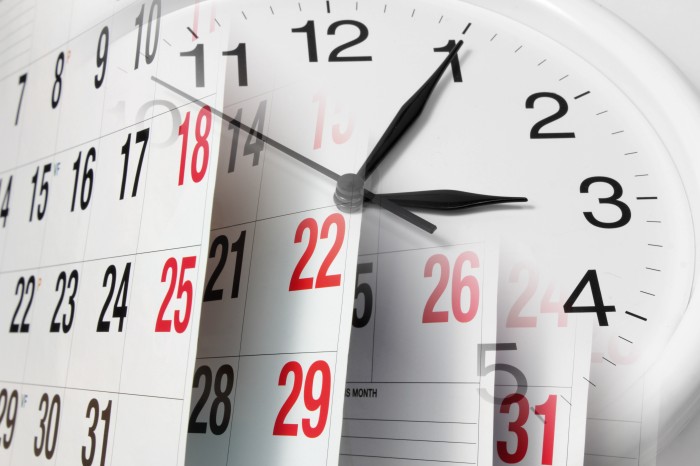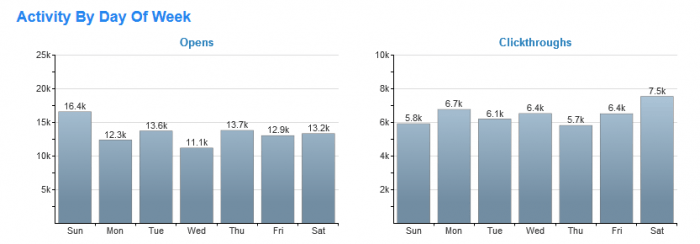 When it comes to email marketing, timing really is everything. You might have a compelling message that’s completely personalized and right on target. But if you send it at the wrong time, it won’t get opened – much less read or clicked on.
When it comes to email marketing, timing really is everything. You might have a compelling message that’s completely personalized and right on target. But if you send it at the wrong time, it won’t get opened – much less read or clicked on.
Finding the right days and hours to send is critical; so is figuring out the correct cadence and frequency. If you send too many emails too often, or too few emails too far apart, you can lose people quickly. The first tactic might get your well-meaning messages flagged as spam. The second might make your audience wonder who you are, since they may not remember signing up for emails from you. And that means they’ll unsubscribe, delete, or just ignore your campaigns.
Timing is also important when it comes to how quickly a message arrives after a particular action on the part of a customer or prospect. When someone signs up for your newsletter, a confirmation message should arrive right away – not a month from now. If they purchase something on your website they should get a receipt immediately (or very quickly). So let’s take a look at the best ways to beat the buzzer in email marketing by delivering the right message, to the right person – at the right time.
How do you find the best time to send email?
Let’s start with the age-old question that has been vexing email marketers since way back in the day (you know, back when people still got excited every time they got a message). And that question is:
When is the best time to send an email?
 Common wisdom suggests that you should never send on Monday, because that’s when everyone is swamped and too busy to click on every email that’s sitting unread in their inbox. Tuesdays are great because people have put out fires, caught up on their workloads, and feel ready to tackle the mountain of unread messages. Wednesdays are good, too, because they’re like Tuesday, only a day later. But by the time Thursday rolls around, things are hectic again. Friday? Forget it. People are burned out and deleting everything that’s not mission-critical. Saturdays and Sundays are dead zones for most marketing messages.
Common wisdom suggests that you should never send on Monday, because that’s when everyone is swamped and too busy to click on every email that’s sitting unread in their inbox. Tuesdays are great because people have put out fires, caught up on their workloads, and feel ready to tackle the mountain of unread messages. Wednesdays are good, too, because they’re like Tuesday, only a day later. But by the time Thursday rolls around, things are hectic again. Friday? Forget it. People are burned out and deleting everything that’s not mission-critical. Saturdays and Sundays are dead zones for most marketing messages.
In fact, that’s pretty much what MarketingSherpa found in their marketing research on the topic. They asked email marketers, “How effective are emails sent each day of the week?” in the MarketingSherpa 2013 Email Marketing Benchmark Report. The results? Respondents said that Sunday was the least effective, with Saturday a close second. Tuesday was the most effective day for sending emails, according to email marketers. But are they right? Or does the data tell a different story?
The answer is that it depends on the audience, the type of message you’re sending, and a host of other things. So if you really want to know the right “when,” you should start by asking some other questions before diving in.
1. First, understand the “who”
Research is valuable, and so are expert opinions. But nothing is as important knowing as what works for your audience – or for particular segments of your audience. Because of course, one size does not fit all. People are becoming much more fluid in the ways they open and read email. Who are you emailing? Are they hot prospects, inactive leads, or long-time customers? Is it a B2B message or are you reaching out to consumers? What time zone are they in? The “who” will help inform the “when” as well as the “how often.”

2. Then, determine the “what”
The “what” is as important as the “who,” in many cases. What kind of content are you advertising in your email? Is it a promotion for a webinar? Because if that’s the case, weekends are not the best time to send, according to benchmark data analysis by ON24. They found that the middle of the week is the best for webinar promotional emails, with Tuesday, Wednesday, and Thursday significantly outperforming the rest of the week.
Here at Act-On, we used testing to determine that email with a summary of Marketing Action blog posts performed better on Saturday than Friday. It just makes sense. Busy people don’t always have time to read longer blog posts during the week, and getting caught up over the weekend is how many of us deal with our overscheduled days. (You can sign up to receive it in that box at the top right of the page, by the way.)
3. Finally, put it to a vote
That leads us to testing – the ideal way to determine which day of the week and time of day is right for your email. If you have a big enough list, you can use a split test to determine which day works best. Divide your list into seven homogeneous groups. Send the exact same email to each group at the same time – varying only the day of sending for each group. Your goal is to test the days against each other with all other factors – size and type of group, message, times of day, etc. – the same. Of course, you’ll want to repeat this process a few times to make sure you have enough data to see a clear trend, and you may want to repeat it using a different time (morning versus afternoon, for example).
 You can also analyze your list and look for trends in how people have responded to your messages in the past. If you find a large segment that always seems to respond after noon on Sunday, try personalizing your send time to their behaviors. You can also note online trends and see if sending emails when people are most active on your website or your Facebook page affects results.
You can also analyze your list and look for trends in how people have responded to your messages in the past. If you find a large segment that always seems to respond after noon on Sunday, try personalizing your send time to their behaviors. You can also note online trends and see if sending emails when people are most active on your website or your Facebook page affects results.
The same goes for time of day. Once again, common wisdom suggests that sending an email at 2 p.m. is a better idea than sending it at 2 a.m. But who is your audience? Are they teenagers? Vampires? Do they work the night shift? Understanding the habits and behaviors of your list segments applies here too. With the meteoric rise of mobile usage, many of us are checking email everywhere, at any time, day or night. Testing send times is the only way to be sure how your list will respond.
Remember, the preferences of your audience are likely to change over time. Sending an email at noon on Saturday might be the best option this year, but next year it could be different. Continually test the timing of your messages and track the open trends. That way, you’ll always send your messages at the best time.
Just getting started with email marketing?
Get the jump on it with this free toolkit:

